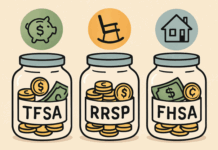The gig economy has moved well beyond food runs and rides, changing the way people offer their work and expertise. What keeps it appealing is the freedom to set terms. Telehealth has followed a similar path, once a temporary fix, but now a normal part of care. Together, the gig model for virtual healthcare services opens the door for home-based professionals, allowing clinicians and wellness providers to work steadily without the overhead of a traditional clinic. Lower costs, no commute, and faster response times make the model well-suited to a practice run from home.
A Shift in How Speed Defines Trust
These days, the quickest way people judge a service is by how fast it responds. A quick reply, an early delivery, a process that doesn’t stall—these details matter. A promise only counts when it’s kept in practice. Picture a patient who lands a same-day telehealth slot. Relief comes from the consultation, yes, but also from how quickly worry turned into care. Or a buyer who finds a parcel at the door ahead of schedule—quiet proof that the seller can be relied on.
The same pattern holds in payments and digital platforms, gaming included. Delays plant doubt; direct access to funds does the opposite. Bonus credits mean more when they clear at once instead of lingering in limbo. In that light, the fastest online casino payout has become a straightforward sign that the service is run properly and delivers as it says.
This demand for speed now frames expectations almost everywhere. Prompt replies, clean handoffs, clear next steps—that’s the bar. Healthcare makes it obvious. Telehealth has moved from temporary fix to standard, and trust follows the same trio every time: speed, clarity, access.
Meeting Patient Expectations With Flexibility
Telehealth has slipped into the everyday in a way few predicted. Appointments now take place on the same screens used for paying bills or ordering groceries. That convenience has redrawn the lines of what people value in care. A familiar name on the door matters less when speed and clarity are on offer. Short waits, steady access, and plain communication now weigh just as heavily.
The gig model for virtual healthcare services aligns with that expectation because availability can match demand in real time. Providers set hours, define scope, and operate across regions without long commutes or idle rooms, which keeps calendars tight and response times short.
Freelancers Turning Spare Rooms Into Clinics
In many communities, a spare bedroom or study is now doubling as a clinic. Medical assistants working remotely keep records in order, handle scheduling, and step in during sessions to provide support and accurate notes. Licensed practitioners use video platforms to carry out assessments, guide treatment, and check progress at times that fit patient routines.
Wellness specialists build programs around diet, exercise, and stress management that slot easily into daily life. Though the services differ, they rest on the same pillars: orderly systems, reliable documentation, and steady results.
The pattern is familiar from other freelance fields. Reputation grows from skill and consistency, not from a sign on the wall. For patients, the experience often feels more personal when the same professional returns to each session, answering questions and keeping care on track.
For providers, the home office is not a fallback but a base of operations. It gives control over schedules and processes, and over time it builds a loyal group of clients who value care that is predictable and on point.
Care That Adjusts to Demand
The strength of this approach is its give and take. A clinician might open the day with early calls in one region, pause at midday to handle notes, then spend the late afternoon with clients three time zones away. Some weeks are heavy, others lighter. The schedule grows when demand peaks and shrinks when personal matters press in.
Patients gain from the same flexibility. Evening slots, once rare, are now common. Weekend availability trims delays and keeps sessions from being missed. Virtual healthcare services fit best for steady routines—follow-ups, counseling, coaching—where regular contact means more than the setting.
What began in the pandemic never really ended. Many tried online visits out of necessity and kept them because they saved time. For providers, the return visits proved the point and justified investing in sharper systems.
Today the handoff is smooth. Records, monitoring data, prescriptions—each flows through without extra layers. The result is continuity that small practices once struggled to deliver. Now a single provider, working from home, can match the efficiency of a larger office while keeping the experience personal.
Building Stability and Growth
Flexibility is the entry point, but stability is the aim. Independent providers build durable income by focusing on service levels that bring patients back. Response times are tight, documentation is crisp, and expectations are set clearly at the first visit. From that base, growth can take two paths.
Some narrow the practice and become the obvious choice for a specific need, such as medication management or post-operative check-ins. Others form small networks to cover broader hours and pool specialized skills without giving up independence.
Technology makes it possible to expand without adding noise or extra costs. Scheduling tools reduce no-shows, secure messaging keeps conversations moving, and integrated records remove double entry. Remote monitoring extends reach without adding travel or facility costs.
With a defined set of processes, one person can manage a surprising volume while maintaining quality. Payments settle predictably, which keeps cash flow smooth. The core advantages—speed, access, and clarity—show up in metrics that matter to clients and partners. Actionable dashboards turn numbers into decisions.
A Return to Personal Care Through Modern Tools
The gig model for virtual healthcare services brings care back to basics. No crowded lobby, no shuffle from desk to desk—an appointment starts with someone who already knows the chart. The exchange feels close to a house call, and the next step is usually set before the call ends.
Technology carries the conversation, but trust comes from steady contact and follow-through. Regular hours, clear expectations, and tight documentation let home-based clinicians and wellness pros run a stable practice without renting extra rooms. Lower overhead and repeat bookings make the work durable rather than temporary.
What keeps people coming back is simple: on-time starts, notes that are easy to understand, plans that move forward, and results they can see. Those habits turn a spare room into a reliable clinic and keep a small operation strong over time.
Find a Home-Based Business to Start-Up >>> Hundreds of Business Listings.















































